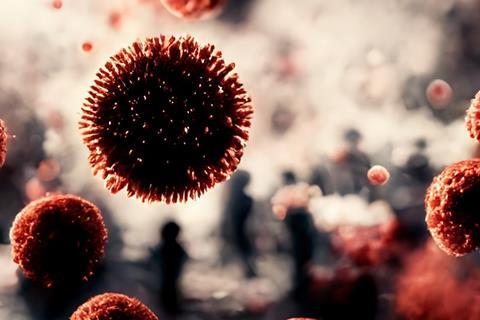Severe acute respiratory syndrome coronavirus 2 (SARS-CoV-2) continues to adapt to the herd immunity background and evolve into numerous sub-variants.

The lab of Prof. George Fu Gao (GAO Fu) at the Institute of Microbiology of the Chinese Academy of Sciences (IMCAS) has revealed the spike (S) protein structures of the recently emerged BA.2.86, JN.1, EG.5, EG.5.1 and HV.1 subvariants of SARS-CoV-2, and conducted systematic comparative analysis on these subvariants. The findings were published in Structure.
READ MORE: Mutations of the spike gene do not predict the severity of variants of SARS-CoV-2
READ MORE: New technology uncovers mechanism affecting generation of new COVID variants
The subvariants evolved from BA.2 could be mainly divided into two branches. The branch represented by BA.2.86 and JN.1 was more likely to show the “3-receptor-binding domains (RBDs)-up” state of the S protein under the induction of its receptor, human angiotensin converting enzyme 2 (hACE2). In contrast, the branch represented by XBB, EG.5, and HV.1 was more likely to show the “2-RBDs-up, 1-RBD-down” state under the induction of hACE2.
Electrostatic changes
Compared to other subvariants, the branch represented by BA.2.86 carried a new N-glycosylation at residue 354 due to the K356T mutation, and this glycosylation site affected binding of the RBD to antibodies, such as S309. Compared with the BA.2 strain circulating in 2022, the RBD surface of BA.2.86 and JN.1 showed significant electrostatic changes, which enhanced their immune escape. Among them, BA.2.86 had a higher receptor binding affinity than its progeny JN.1, which escaped from more antibodies.
Structural analysis showed that the R493Q reverting mutation in the BA.2.86 RBD promoted receptor binding, whereas the L455S mutation in the JN.1 RBD reduced receptor-binding affinity.
This study supports the lab’s previous opinion that during the evolution of SARS-CoV-2 subvariants, immune escape is gradually enhanced, while receptor binding capacity fluctuates and remains in a moderate range (5-40 nM).







No comments yet